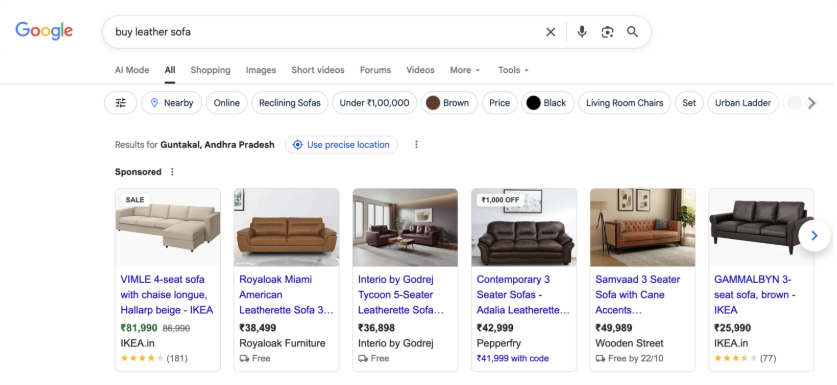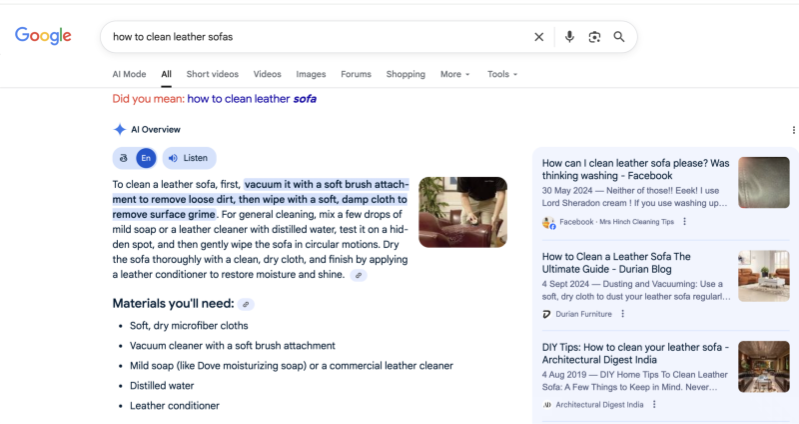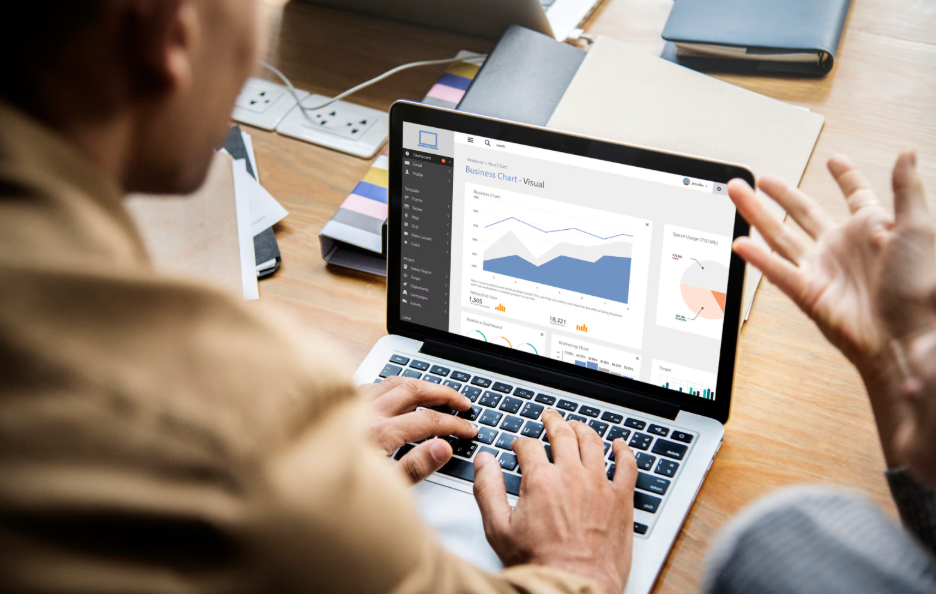

Remember the early promise of the internet?
A free marketplace where the best ideas and products could win on merit alone and how Google never mixed its organic results with an advertiser’s wallet? Well, that internet’s long gone.
Search used to lead you somewhere. Now it ends where it begins.
We were told that AI would make discovery smarter, faster, and more personal. Maybe it does, for the user. But personalization never stays perfect. Look at YouTube. It has more data on user behavior than almost any platform in history, and still, its search is a mess.
But for merchants, it’s simply not working in their favor.
A study across 25,000 ecommerce searches found that AI Overviews now appear on 16% of them. Sounds small, right?
But here’s the part that changes everything: 80% of the links those AI boxes cite don’t even rank organically for the same query.
That means visibility is no longer defined by rankings alone. The system is shifting from who ranks best to who the algorithm deems relevant enough to cite.
Brand power is now dictating the wins. Traditional SEO offered a level-playing field, merchants could compete through great content, stronger site experience, or better optimization.
AI Overviews changed that. They’re heavily dependent on brand recognition and search volume.
For example, in the personal care category, Amazon and Walmart together account for 17% of all domain citations inside AI Overviews. The bigger the brand, the higher the odds of being cited.
For large, established brands, that often means more surface area, they’re already recognized entities with vast product data and user signals. For smaller stores, it’s a new kind of challenge. The traditional levers, content, SEO, backlinks still matter, but they don’t guarantee the same outcome.
Even if your store ranks in the top three, there’s only an 8% chance your product page gets cited inside AI Overviews. That’s the reality right now. It could change for better or worse, as the system evolves.
The point isn’t cynicism, it’s realism, so you can see the shift clearly and prepare for it. And for merchants, it’s a whole new world. The goal isn’t only to appear on the results page anymore, but to exist in the story, the algorithm tells when a shopper starts looking.
Not every search behaves the same anymore.
When someone asks Google a question like “how to clean leather sofas” or “how to find best laptops for design work,” AI steps in quickly.

But when that search turns transactional, like “buy leather sofa” or “MacBook Pro 16-inch,” Google takes a step back, which is good for us.

A study analyzing more than 120,000 keywords across 22 major websites found that AI Overviews appeared for 59% of informational queries, but only 19% of commercial ones.
For us, that changes where the customer's journey even begins. If your shoppers start with questions, they’re more likely to stay inside Google’s ecosystem. If they start with intent to buy, they’ll still reach your site, for now.
Even more telling, for users who aren’t logged into Google, ecommerce saw a 90% drop in AI Overviews. It signals Google’s cautious approach in high-transaction searches where a wrong answer could cost trust.
And when AI Overviews do appear alongside featured snippets, which happens around 60% of the time, they take up most of the screen, about 67% on desktop and nearly 76% on mobile.
That’s prime real estate gone before a single organic result appears.
You’ve seen this before, first with featured snippets, then with “People also ask.” The difference now is scale.
It’s easy to think rankings don’t mean much anymore, but they still shape how AI decides what to trust.
According to the study by Botify and DemandSphere, most AI Overview sources still trace back to strong organic performers. About 75% of the websites cited came from the top 12 search results, and nearly 90% were found within the top 35 or higher.
More recent data from September 2025 shows that link growing even stronger. Over half (54.5%) of all AI Overview citations now come from pages that already rank organically, compared to 32.3% in May 2024.
But all of this was before Google’s latest update, the one that now loads only 10 results.
Will that shift break the old correlation between rankings and citations? Maybe. Maybe not.
For now, the takeaway is simple; rankings still open the door, but they no longer guarantee the customer walks through it.
Visibility still starts with SEO, but attention now depends on how AI interprets your relevance.
Of course, traditional SEO isn’t gone. It’s just shape-shifting every few weeks, picking up a new personality each time Google tweaks what it values.
AI often reflects what’s most visible and widely referenced across the web, and that naturally benefits larger, well-established brands.
In the personal care category, Amazon alone accounts for about 10% of all domain citations in AI responses, followed by Walmart at 7%. These citations often come from ecommerce URLs, product, and category pages that already dominate search results.
In other words, the visibility advantage that once existed in traditional rankings now extends into AI-generated answers too.
A study analyzing more than 7,000 AI citations across 1,600 URLs found a clear pattern, the more recognizable a brand is, the more likely it is to be mentioned by AI systems.
That recognition wasn’t about backlinks or domain authority. It came down to branded search volume and category association, how often a brand name naturally appears alongside a specific product type.
Traditional SEO metrics barely moved the needle. In some cases, they even showed a negative correlation.
By 2024, more than 60% of large retailers earning over $500 million a year had already integrated AI into their daily operations, from inventory forecasting to product tagging and content optimization. Among all retailers, that number sits closer to 45%.

So, what really makes AI pull one store’s page and skip another?
The data points to three signals, and they reveal a lot about how discovery is quietly changing for ecommerce.
AI may not always cite the top result, but it still starts there.
Across thousands of queries, the median organic rank for cited sources is 4, and the average sits around position 12.
If your store is already ranking on page one, you’re in the conversation. You may not always get the mention, but you’re visible enough for the model to “see” you.
When researchers compared AI summaries with the content they pulled from, they found that, semantic similarity drives citations.
In plain terms, if your page genuinely answers what the shopper’s asking, not just sells,, you have a higher chance of being cited.
AI prefers content that matches the same intent as its summary. Think “How this product fits your need” instead of “Buy this now.”
Content quality matters, but brand recognition still carries the most weight.
Across AI platforms, branded search volume, how often people look for you by name, is the strongest predictor of whether you’ll be cited.
So even if your SEO is spotless, it’s your brand familiarity that makes AI trust you.
The stores people already search for are the ones that show up first, even inside the AI box.
Put simply, AI visibility isn’t random. It’s built on the same three things stores have always chased, ranking, relevance, and recognition, just reordered for a new kind of search.
Even when you do all that right, the traffic picture still looks different.
Since AI Overviews rolled out, the numbers tell a consistent story.
In March 2025, Pew Research tracked what happens when Google’s AI Overviews appear at the top of search results. When an AI Overview shows up, only 8% of people click through to a traditional site.
Without it, that number jumps to 15%. That’s almost half your potential visitors gone before they even see your store.
So, if your charts feel lighter, that’s why. We’re living in the era of zero-click discovery.
More people are seeing your listings; fewer are clicking them. You’re still visible, just not visited.
The data points to a cautious yes.
Larger retailers benefit from a few built-in advantages, Higher brand awareness, category dominance, more resources and stronger domain authority
But that doesn’t mean smaller or niche brands are shut out.
Research also shows that deep expertise and topic authority can help level the field.
In other words, while you don’t need to be massive to be mentioned, you need to be meaningfully mentioned in the right context. It’s not fully over, but yes the playground’s shifting.
In ecommerce, that means owning your niche, building content that genuinely teaches, and maintaining the kind of credibility that algorithms can verify.
Because while size opens the door, expertise keeps you in the room.